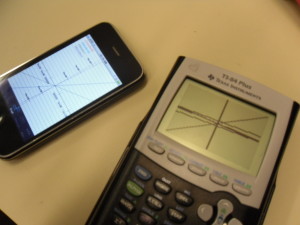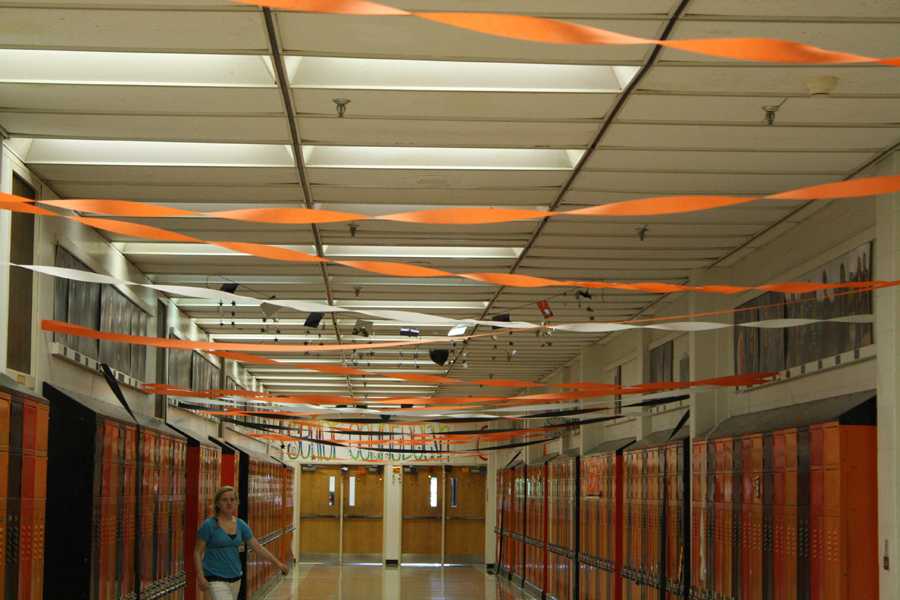
By Ana Billotti
Round Table web producer
Text messages from one high school student to another:
“I just want to go home”
“LOL”
“So bored”
Text messages from one high school student to another:
“Hey what was the homework I missed yesterday?”
“What was the name of that website where I can find reliable articles for my research essay?”
“When is our next test in AP Biology?”
There is a noticeable difference between the two sets of text messages exchanged by high school students. One is not productive to the student’s school day while the other provides the student with necessary information.
Cell phone use in the halls and classrooms is an ongoing problem at Middletown High School, but cell phones may not just be a disturbance to teachers and a distraction to students; they could be a benefit to them, as well.
Most cell phones that are manufactured today are able to do more than just make phone calls; cell phones are able to have pre-downloaded games and tools, camera and video recorders, and access the internet.
Despite all the potential benefits these tools and applications offer to students, Frederick County Public Schools still forbids the use of portable electronic devices during the school day.
“FCPS regulation prohibits the use of portable electronic communication devices during the student school day and during bus transportation. Students are required to keep such items completely turned off and concealed in their book bags, vehicles or lockers, and are prohibited from taking unauthorized photographs of others,” according to FCPS’ Handbook.
“Using a cell phone is a distraction,” said Alisa Gibson, Middletown High School Foundation of Technology teacher, “Kids are very easily distracted by Facebook, Twitter and other social media websites.”
If used without guidance from teachers, cell phones can be a distraction to high school students, but there are many positive benefits to using cell phones in the classroom and ways for teachers to effectively incorporate them into everyday classroom use.
“I am a firm believer that hand-held portable devices are a useful tool,” said Jay Berno, MHS principal. “If you went into a digital photography class and use the equipment in there, it would be inferior to the equipment in [your] pocket.”
Cell phones are useful tools for students to have and can be put to good use in the classroom. Internet-enabled cell phones can allow students to visit websites that will assist them in their schoolwork: websites that may be unreasonably blocked on MHS school computers.
“I would [use my cell phone to] look up answers for school work,” said Shelby Breeden, MHS junior.
Cell phones can also be used in a positive manner during math classes.
“I could use my cell phone for math, as a calculator,” said Kristina Gincley, MHS junior.
Cell phones can provide a student whose calculator just ran dead with a quick and just as efficient tool. Students that are in the possession of an iPhone can quickly – and for free – download an app called Free Graphing Calculator. This app provides the student with a tool to solve basic math problems as well as complex trigonometry problems.
A TI-83 or 84 Graphing Calculator (as required by FCPS for most math and science classes) can cost close to $100. It only makes sense in today’s economy to try and save money. A student can download a free app onto his or her personal cell phone and literally save hundreds of dollars.
Cell phone use is beneficial to students in the classroom and there is more than what meets the eye when the issue is addressed.
At Hinsdale Central, in Hinsdale, Ill., the school has now opted to allow students to use their cell phones “between classes, during lunch periods and — when teachers give permission — in the classroom,” according to a new story published by the Chicago Tribune.
Students at MHS understand why the cell phone policy is in place, but they also believe there are times when they should be allowed to use it.
“I would most likely use my cell phone in emergencies, taking notes, or having to remember something,” said Marissa Keppley, MHS senior.
Even as cell phones become more of a necessity than a luxury, there are still high school students who do not have their own cell phone, which could put those students at a disadvantage if cell phones became a dominant part of their classroom lessons.
“[An] issue a lot of people want to bring up is equality,” said Berno. “The two biggest issues [with cell phones in classrooms] are availability of technology and proper use of technology.”
Regardless, as technology advances and evolves, and becomes a bigger part of school classrooms’, the cell phone policy is bound to change.
“[We can] do needs assessments of curriculum, see what classes can benefit from use of technology. [We can] have conversations with directors of high school and the superintendent, convince them that the regulations are too restricting,” said Berno.













